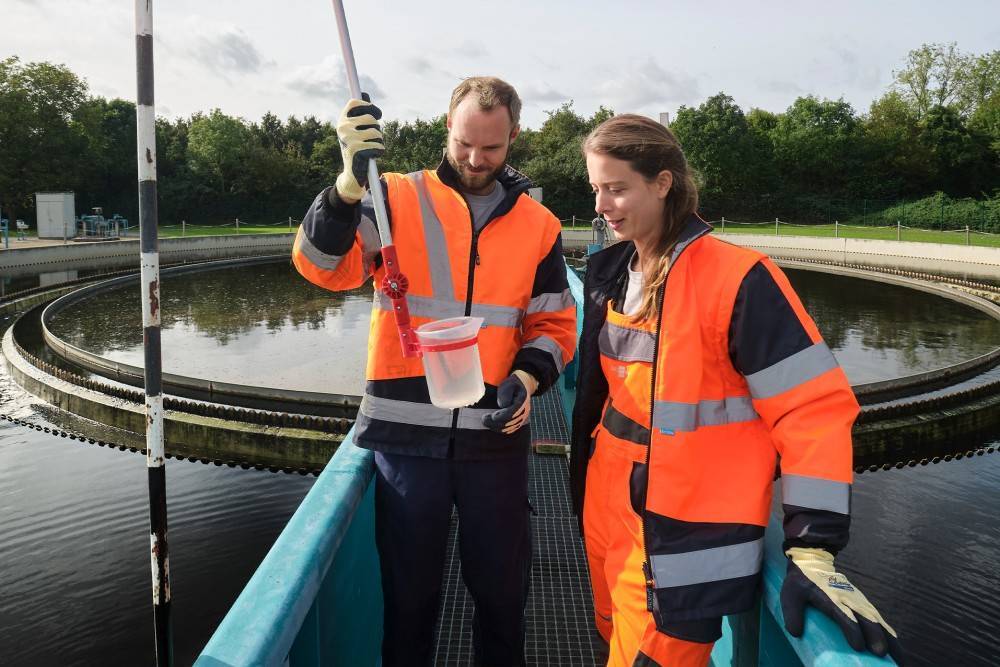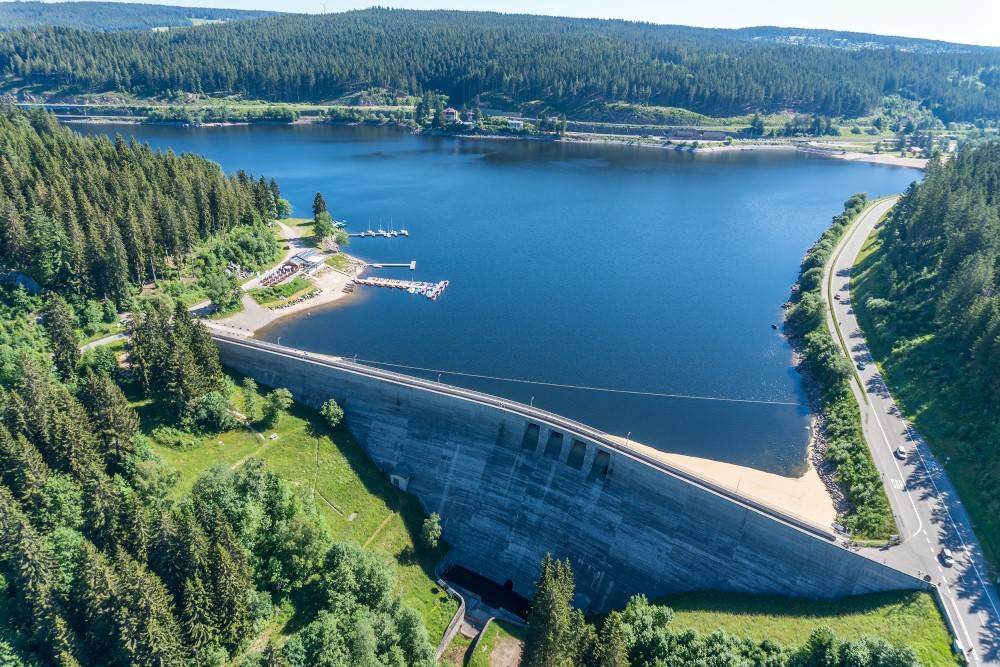|
“Our expectations and project goals were far exceeded.” Manfred Nielsen, Project Manager, Karl Storz GmbH & Co.KG |
Since the company was founded in 1945, Karl Storz GmbH & Co. KG has succeeded in making inventions that are still considered milestones in endoscopy today and have had a decisive impact on the widespread use of minimally invasive surgery. Today, the company develops, produces and sells an extensive range of products worldwide, including endoscopes, medical instruments and devices for endoscopy.
In addition, Karl Storz recognized the trend towards system solutions as early as the beginning of the 1990s and has since been an experienced provider of integrated operating room concepts, in which all equipment functionalities in the operating room – with particular attention to ergonomics, patient safety and telemedical applications – are centrally controlled. In addition to the main area of human medicine, endoscopic equipment from Karl Storz is used in veterinary medicine as well as in industry. In the industrial sector, for example, the products are used in the maintenance and assessment of aircraft turbines, engines or structures.
The manufacturer gains valuable impetus for the further development of its product range, which comprises around 15,000 items, through intensive professional dialog with leading physicians, university hospitals and research institutes. In addition to production at its headquarters in Tuttlingen, Karl Storz maintains a further seven development and production sites in Germany, Switzerland, the USA, Estonia and the UK. Each location has highly specialized technological know-how. Mechanical and optical components are primarily manufactured in Germany and Switzerland, while camera systems and optical fibers are produced in the USA in particular. The high degree of specialization, combined with an internationally positioned research and development group, allows Karl Storz to respond quickly and successfully to changing market requirements.
Historically, two completely separate SAP systems are operated for the USA and Europe. Both are technologically congruent and up to date. However, they differ in their basic settings, filling and processing procedures. As a result, different article numbers were used internally, for example. The differences in the databases had to be harmonized because they neither allowed a higher-level view of all article movements nor provided a reliable evaluation basis for international corporate management.
Karl Storz initiated an exemplary large-scale project to consolidate the material master data created worldwide. “Our expectations and project goals were exceeded by far,” says Manfred Nielsen, responsible project manager of Karl Storz, about the result. “At the beginning, the focus was on three central questions: How can identical material master data be merged without any doubt? How can changes to products be made transparent and traceable? And how can it be ensured that cross-country reporting is based on secure facts and assumptions?”
In addition to the necessary optimization in the master data, the main aim was to ensure high data quality from the very first input in the future and to keep the maintenance effort for consistent information as low as possible. The vast majority of Karl Storz products consist of many individual parts. Along the creation process, many departments contribute to ensuring that a quality product leaves the company in the end.
The sale of the products does not begin until a technically and functionally mature product has been created and all accompanying processes (creation of instructions for use, technical documentation, ...) have been completed. This means that new information about the product accumulates at every stage. If the process came to a halt at any point on its way through the departments, the search for the cause of the delay was tedious. No one could determine at the push of a button which department still had information to contribute.
The manufacturer lacked a process that could be seamlessly and traceably followed through from the first data entry for a new product setting or change. “Information is the asset of our company,” Manfred Nielsen emphasizes. “Our goal was a higher-level data management scenario with uniform processes for all departments. To achieve this, we had to eliminate the paper-based media discontinuities and map the knowledge from the heads into a system-supported process.”
In an intensive analysis phase, Karl Storz compared several technology providers and chose SAP software. The project manager reports that the key mapping functionality for master data consolidation was just as decisive as the openness and integration capability of the SAP NetWeaver platform. Karl Storz engaged the consulting firm IBsolution as implementation partner, which realized a system network with a total of eight SAP NetWeaver components in a record time of seven months.
Under the umbrella of the SAP NetWeaver portal, a completely new user interface was created, which, as a superordinate layer, provides a view of all systems. The SAP NetWeaver portal thus bridges the gap between departments and serves as a central user interface for the approximately 1,000 information suppliers. Instead of entering data in Excel, Outlook or the SAP GUI, users now enter their data for product creation or product changes directly in convenient input screens.
Below the new front end, three interlinked SAP applications control the proper course of the input process: SAP Business Process Management (BPM), SAP Business Rule Management (BRM) and SAP Master Data Management (MDM). The interaction of the solutions ensures that all necessary information is captured correctly, synchronized and enriched step by step according to the stored rule sets.
SAP Master Data Management (MDM) has data sovereignty and is responsible for the consolidation and synchronization of master data. The software handles the mapping and plays the updated information back to the connected systems. “We use SAP MDM as an intelligent data network. No matter where something is changed, the application gets the smallest intervention and ensures a uniform status on all systems.”
The tool’s greatest strengths – creating, managing, reading and adjusting data – only become apparent when it works together. “An MDM without SAP BPM would be useless for us,” adds project manager Manfred Nielsen. With the help of SAP BPM, business processes can be modeled graphically (with BPMN – Business Process Modeling and Notation) and activated for execution without complex coding.
In the current project, a total of five processes for data collection were modeled end-to-end and completely automated. To do this, more than 170,000 validation rules from the individual departments had to be uploaded to SAP Business Rules Management, largely via Excel tables. SAP BPM accesses these business rules as a control authority and controls the flow of information to the defined end with the stored dependencies and process branches. The process management platform requests input from the colleagues involved, displays situational help texts in the input screens, and logs the individual substeps.
As a result, the formerly paper-based workflow for data collection is now completely mapped in software and its process is largely automatic. Machine assistance ensures that users’ questions are quickly clarified and that the quality of the data entered is at the expected level right from the start. This is a huge step forward for the organization, “because we used to lose a lot of time asking for and obtaining information,” confirms Manfred Nielsen. All media discontinuities have been eliminated and the process is more transparent than ever before. “Via the SAP NetWeaver portal, we now know at any point in time what stage the product is at or where information enrichment is pending. In addition to the high level of traceability, we can accelerate the process in a targeted manner if necessary. And for reporting, the high data quality provides us with statements that are consistent across all systems,” sums up Manfred Nielsen, who also points to the high economic benefits. The throughput times for master data systems have been significantly reduced.
All the employees involved appreciate the improvements. “Colleagues have abandoned their departmental view and recognize the benefits of automated process control using SAP BPM. Some areas now want to simplify further processes on their own initiative,” reports Manfred Nielsen. His conclusion: “We have an excellent basis for implementing processes with little effort and also for automating many tasks in the process. With SAP BPM, the implementation time for upcoming process projects has been cut in half. We are well equipped for the future.”


